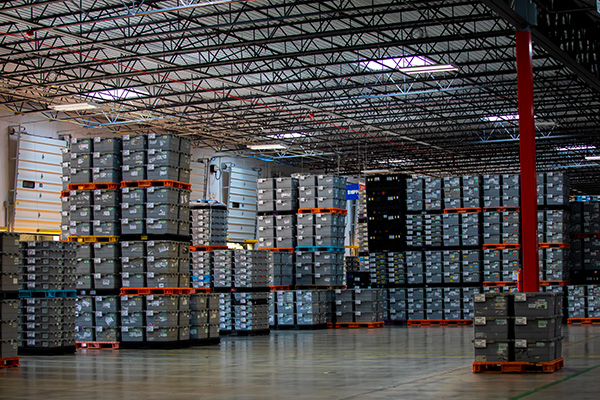The ongoing port workers strike is illustrative of global unpredictability, highlighting the importance of building supply chain resiliency.

By Rusty Coleman, Vice President of Digital Transformation, Surgere
If you’re reading this, you’re likely aware of the United States port workers strike, which began on Oct. 1 following the expiration of a contract between the International Longshoremen’s Association (ILA) and the ports.
While a tentative deal has been made during this week’s negotiations of a new contract, one thing we can predict for certain is continued disruption. These ports see a wide variety of imported cargo, from consumer goods like clothing, furniture and food to industrial supplies like critical parts used by workers throughout U.S. factories—and it could have ongoing ramifications for supply chains everywhere.
But in many ways, this is the new normal for supply chain professionals, and highlights the critical importance of proactive supply chain resiliency. Resilient supply chains can help businesses be better prepared for and quickly recover from disruptions like natural disasters, geopolitical tensions, pandemics, cyberattacks, logistical failures and, indeed, a massive labor strike at some of America’s most important import and export locations.
With all of this in mind, let’s explore some of the ways that professionals can build supply chain resiliency and leverage cutting-edge technologies to optimize supply chain performance, even in times of significant disruption.
It has been reported that the U.S. automotive supply chain will be one of the most impacted by the strike. It’s estimated that $37.8 billion in vehicle imports have been processed at these ports in the past year alone, meaning the strike poses a substantial risk to the timely delivery of vehicles and crucial auto parts. Many automotive production plants rely on just-in-time (JIT) manufacturing practices, which involves minimizing inventory in favor of close synchronization between parts deliveries and the production line schedule.
A resilient supply chain is instrumental in reducing the havoc that major disruptions can cause in an instance like this—and it applies not just to automotive manufacturing. No matter the industry, a resilient supply chain reduces risks associated with overreliance on specific suppliers, regions, or transportation modes, ensuring that businesses are not overly exposed to single points of failure.
The effects of the port workers strike might serve as a wake-up call—and it’s a reason why supply chain professionals shouldn’t wait for the next major disruption to think about ways they can promote greater resiliency.

The good news is that building resiliency—even among unpredictable external factors—is easier today than ever when applying the right tools and technologies.
For example, a thoughtful and strategic application of artificial intelligence (AI) in the B2B space can produce some powerful results. And while it’s true that “AI” can be a buzzword that is currently infiltrating everything, especially in the consumer space, it can be leveraged by supply chain professionals to improve the effectiveness of asset tracking, reduce friction, and help drive real insight into your operations.
Here’s an example: AI in a supply chain management system can be deployed to collect and interpret data from a wide variety of work streams. A single AI module may be responsible for tracking the location of a returnable container. Another is responsible for tracking a shipping truck while it’s on the road. Yet another tracks the last known location of several critical assets. These modules can process vast amounts of data very quickly and can thereby forecast trends, deliver proactive answers to common questions, and help simplify decision-making for us humans.
The results? Optimized business processes throughout the supply chain.
It can be especially effective as professionals navigate external upheaval. AI tool sets can gather information from across users’ supply chains, helping to address common warehouse logistics challenges with shipping lane assignments and stop-ships, making real-time adjustments based on customer-configurable rules and patterns. Managers can more easily forecast production needs based on how many assets they have within their facility, or how many are on their way in. Easy-to-understand visual reports can provide users the ability to track operations and anticipate potential problems before they happen.
AI has significant potential to revolutionize supply chains everywhere, and it can be especially valuable in building greater resiliency. The port workers strike is just one example of the unpredictable interruptions that are impacting today’s supply chain—and it’s worth your consideration and investment to be as prepared as possible.

Rusty Coleman is Surgere’s Vice President of Digital Transformation. Rusty has a profound knowledge of supply chain and operations management. His leadership experience in digital transformation is valuable to our business model as Surgere grows in the market. Rusty has a passion for connecting with people and process. Previously, he was the North American Director of Materials, where he managed the supply chain and the organization’s digital transformation efforts. Rusty is also a member of the Institute of Supply Chain Management.
Scott Ellyson, CEO of East West Manufacturing, brings decades of global manufacturing and supply chain leadership to the conversation. In this episode, he shares practical insights on scaling operations, navigating complexity, and building resilient manufacturing networks in an increasingly connected world.